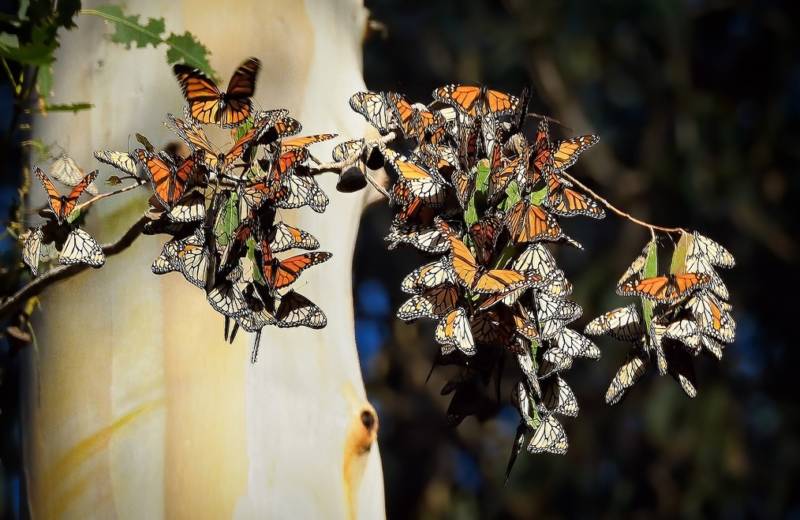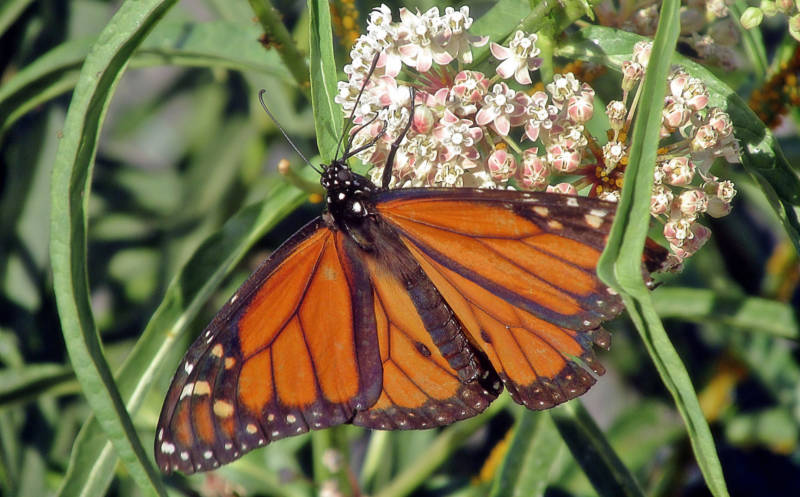California's coast, from Bolinas to Pismo Beach, is a popular overwintering site for the western population of monarch butterflies. Historically, you could find millions of the orange and black winged invertebrates around this time of year, using coastal eucalyptus trees as shelter.
But there’s been a troubling trend over the past few decades. Each year, fewer monarchs have been showing up to overwinter on the state's coast, according to preliminary numbers from the Xerces Society, an environmental conservation nonprofit. The group's annual Thanksgiving count found the 2018 population of these butterflies is down to 20,456 compared to 2017's 148,000. That's a one year, 86 percent decline.
"It's been hard for me, as I remember the millions of monarchs of the 1980s," said Mia Monroe, a Bay Area-based Xerces Society member who helps lead California's monarch population count. "We only have less than one percent of the monarchs that we once historically had."
Counts typically fluctuate from year to year, but Monroe said this year's dramatic drop is breathtaking. Volunteers, like Monroe, counted the butterflies at 97 sites across California, according to the Xerces Society. There are several historical overwintering sites in the Bay Area for monarchs. Some of the more popular locations are in Marin County near the communities of Bolinas, Stinson Beach and Muir Beach.
The exact cause for this year's sharp decline is not known, but Xerces scientists and researchers with U.C. Davis, Tufts University and Washington State University did observe a low population of the monarchs at the beginning of their breeding season last spring.


